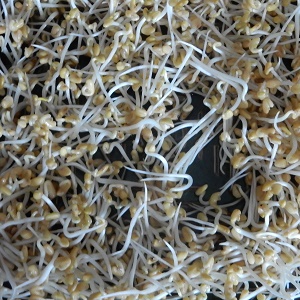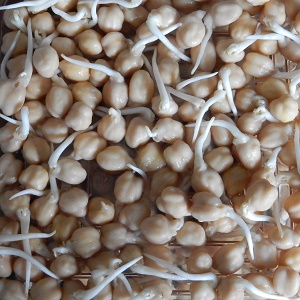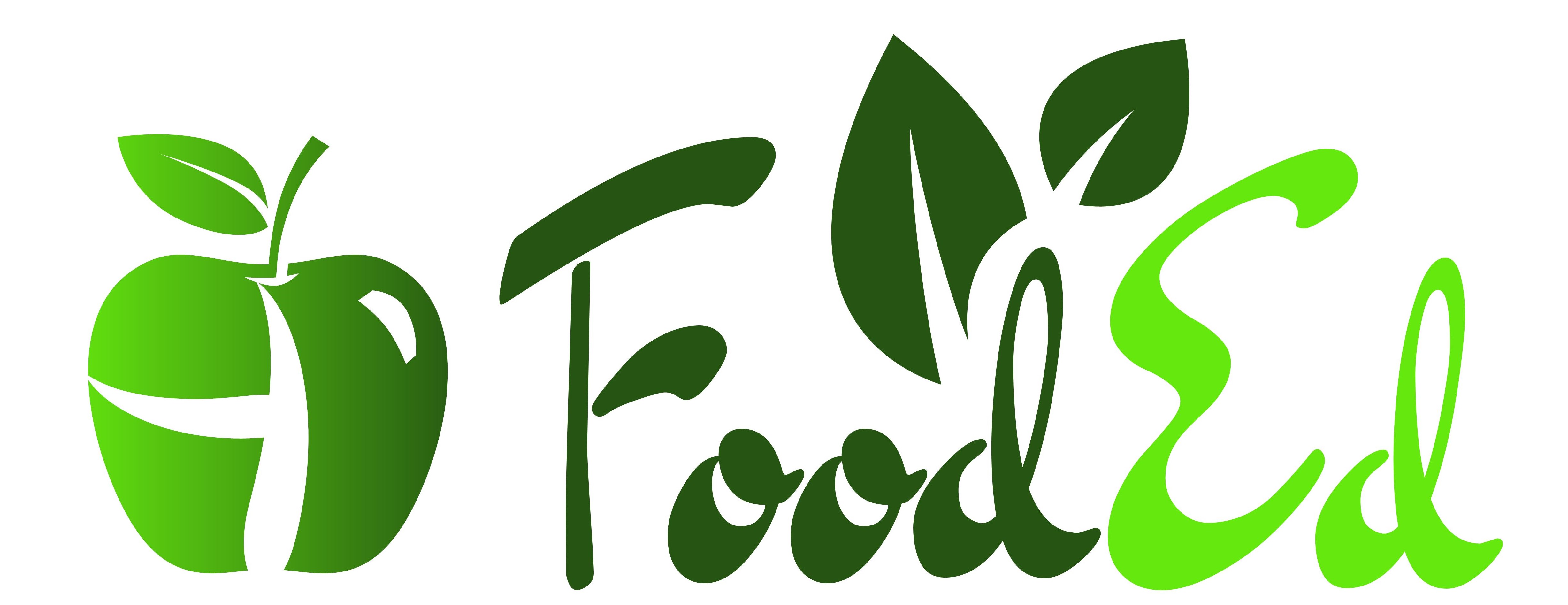 Vegetable sprouts have been used for thousands of years by humans, they were already grown in China 5000 years ago, being used for nutrition and as medicine. Sprouts have many health benefits. So do the Hunza, an Asian hill tribe in the Himalayas that are known for their good health, use sprouts in the winter to give their vitamins, enzymes and energy level a boost. Before the discovery that citrus fruits are a good source of vitamin C, sailors often took beans along on their long sea journeys because the bean seeds are a very good source of vitamin C when sprouted, which is essential in preventing scurvy.
Vegetable sprouts have been used for thousands of years by humans, they were already grown in China 5000 years ago, being used for nutrition and as medicine. Sprouts have many health benefits. So do the Hunza, an Asian hill tribe in the Himalayas that are known for their good health, use sprouts in the winter to give their vitamins, enzymes and energy level a boost. Before the discovery that citrus fruits are a good source of vitamin C, sailors often took beans along on their long sea journeys because the bean seeds are a very good source of vitamin C when sprouted, which is essential in preventing scurvy.
Sprouts are the edible young plant shoots that sprout from all kinds of seeds. These shoots are generated from the seed by heat and water. You can make edible vegetable sprouts from almost all seeds of plants for human consumption with a few exceptions. An example of such an exception are plants of the Nightshade family (e.g. potato and eggplant), these can not be used for sprouts beacause the seeds and sprouts contain toxic substances. Sprouts are among the most concentrated sources of vitamins, minerals, enzymes and proteins that exist. Growing sprouts goes fast, with no need for green thumbs and they provide a lot of nutritional value.
Different seeds have different soaking and sprouting times. The seeds are first soaked in water and then they have to be kept moist in order to make them germinate. In general, you can say that the bigger the seed is, the longer it has to be soaked. Different names are used for the final products. Sprouts are the first shoots from the seeds which still bear no leaves. Sprouts are mostly white, with no chlorophyll, and are therefore best germinated in a dark place. Most types of beans, members of the onion family and some spices are grown as sprouts.
 Greens or micro vegetables are sprouts that are left to grow a few days longer until the first green leaves have formed. Sunflower seeds, pumpkin seeds and peas are mostly used for making greens. Micro vegetables from the Cruciferous family (all sorts of cabbages) are called cresses.
Greens or micro vegetables are sprouts that are left to grow a few days longer until the first green leaves have formed. Sunflower seeds, pumpkin seeds and peas are mostly used for making greens. Micro vegetables from the Cruciferous family (all sorts of cabbages) are called cresses.
We speak about grasses when referring to the seedlings of cereals. These can not be eaten directly, but are usually pressed into a powerful shot of juice.
There is a pronounced difference in nutritional value between the dry seed and the sprouts. This difference arises because of several different processes at work during the germination of the seed. The starches and oils in the seeds are converted into vitamins, enzymes and proteins. The vitamin content of some seeds may increase during germination up to 20 times. In sprouted mung beans, the vitamins B1 & B3 (Niacin) increase with more than 250%, and vitamin B2 increases by more than 500%.
The enzyme content also increases dramatically during germination. These enzymes make the proteins en carbohydrates more easily digestible. When you eat something without these enzymes, your body must create these enzymes at the expense of energy and minerals that your body could also use for other processes such as warding off diseases. In addition, the content of essential fatty acids and fibres also increases drastically during the germination.
Minerals such as calcium and magnesium are attached to proteins during germination which ensures that both the minerals and the proteins are more easily available and usable for your body. Some proteins also get converted into amino acids, which are also easier to digest. So you can say germinating seeds prepares them for easy digestion by your body.
Eating sprouts also has an alkalising effect on your body. All foods have an effect on the acidity level in our body. The current Western diet contain in general to much food with an acidifying effect. Examples of acidifying foods are sugars, meat and refined foods (mostly pre-packaged foods in supermarkets). Too much acidity in our body is unhealthy and can cause all sorts of diseases. Sprouts have a strong alkalizing effect on the body, which makes them an important tool in restoring the acidity level in your body.
Besides that the sprouts of broccoli are exceptionally tasty, they are also very healthy. Broccoli sprouts of 3 days old can contain up to 100 times as much of one the precursors of sulforaphane as a normal organic broccoli. Broccoli is the main source of this sulforaphane glucosinolate. This substance is responsible for many of the healthy properties of broccoli. Sulforaphane stimulates the phase 2 detoxification of the liver and it’s been proven by clinical research that this substance provides protection against breast cancer. The results of this study showed that sulforaphane led to a decrease and reduction of breast cancer cells and delayed the cell division of cancer cells.
In another study, the broccoli sprouts were found to significantly reduce the growth of the bacterium Heliobacter Pylori. People who are infected with these bacteria suffer form gastrointestinal problems. The people receiving daily broccoli sprouts during the trial, showed a sharp decrease in symptons associated with the infection.
 Sprouts have had some bad publicity in the past because they where suspected of having caused outbreaks of E-coli and Salmonella. The reason for this was probably the use of seeds that have been exposed to manure or fertilizer, and then grown commercially. Germinating seeds should never come into contact with fertilizer and are best when they are organic. When you grow your own sprouts at home with preferably organic seeds you have no risk on contamination.
Sprouts have had some bad publicity in the past because they where suspected of having caused outbreaks of E-coli and Salmonella. The reason for this was probably the use of seeds that have been exposed to manure or fertilizer, and then grown commercially. Germinating seeds should never come into contact with fertilizer and are best when they are organic. When you grow your own sprouts at home with preferably organic seeds you have no risk on contamination.
 For growing sprouts you don’t need a green thumb and it does not take much effort. You can even grow them in a place where it’s cold and dark. White sprouts such as the well known sprouts of the Mung bean have to be grown in a dark place. The easiest way is a pot with a lid. After the seeds are soaked and washed you just have to put in a pot with the lid on and then you only soak them water, preferably 3 times a day, and flush the water away for example through a strainer or a cheesecloth. After several days depending on the chosen seeds your sprouts are ready to eat.
For growing sprouts you don’t need a green thumb and it does not take much effort. You can even grow them in a place where it’s cold and dark. White sprouts such as the well known sprouts of the Mung bean have to be grown in a dark place. The easiest way is a pot with a lid. After the seeds are soaked and washed you just have to put in a pot with the lid on and then you only soak them water, preferably 3 times a day, and flush the water away for example through a strainer or a cheesecloth. After several days depending on the chosen seeds your sprouts are ready to eat.
Another possibility is to use a special sprouting station. These consist of several plastic containers with a grate at the bottom so the water can drain. These containers can be stacked on each other and so you can grow different sprouts at different layers.
You can also grow sprouts in a bag of cotton, linen or hemp. The excess water runs clear out of the bag after you have soaked them.
For the cultivation of micro vegetables and grasses you will need a spot on the windowsill. These need light for photosynthesis for which they produce chlorophyll. This chlorophyll is one of the substances that make micro vegetables so healthy. Micro vegetables and grasses require a medium to grow on. For this you can buy special growing mats or you could use moist cotton wool or just simply soil. The use of a thin layer of soil provides the best yields and the best flavour, make sure that you use good organic soil that contains the right nutrients.
Here follow some reasons summed up to eat raw organic vegetable sprouts:
- Sprouts contain up to 100 times as much natural enzymes as raw vegetables, and by cooking vegetables these enzymes are lost.
- Sprouts are natural multi-vitamins.
- Sprouts provide a better quality of protein than the seeds.
- Sprouts provide more dietary fibre than the seeds.
- Sprouts provide more essential fatty acids than the full grown vegetable.
- Sprouts provide proteins that bind to different minerals which promotes the absorption of both.
- Sprouts have an alkalizing effect on the body.
- Sprouts are easy to grow at home and so you will know exactly what you are eating.



